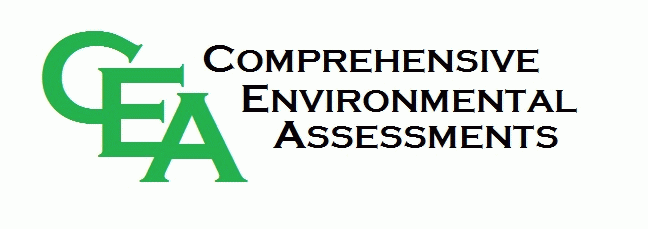
Services
General Industrial Hygiene Surveys
It is good business to maintain a healthy work force. Employees can be exposed to a variety of workplace stresses that reduce productivity and increase direct and indirect production costs because of worker illness and absence from the job. Long-term exposure to some materials can manifest chronic health problems in workers and increase claims under Workers' Compensation. These items may be present as dust, fumes, gas, heat, mist, noise, radiation, and vapor.
The Occupational Safety and Health Administration (OSHA) have regulated more than 400 substances used in the workplace. It is the responsibility of the employer to ensure the workplace is free from these recognized hazards.
CEA can evaluate your workplace in response to concerns from management, complaints from workers, or in response to an OSHA inspection. We can also identify and evaluate the facility for compliance with OSHA regulations and with consensus standards such as the American Conference of Governmental Industrial Hygienists (ACGIH) and the American National Standards Institute (ANSI). Samples are collected, where required, to determine general area and personnel exposures to airborne materials. A report of findings is written with alternatives and cost estimates to comply with the regulations and to protect the health of personnel.
Asbestos
Asbestos can cause a variety of lung diseases including asbestosis (scarring of the lungs), and several forms of cancer. Asbestos is a regulated material that must be assessed prior to building renovation and demolition.
CEA's inspectors are trained and licensed under the EPA Asbestos Inspector and Management Planner designation. An in-house asbestos project designer is on staff for development of abatement plans. We offer the following asbestos services:
- Conduct visual inspection and bulk sampling
- Prepare scope of work documents or specifications for abatement
- Assist with the selection of abatement contractor
- Manage abatement project to comply with regulations
- Perform air sampling to evaluate asbestos exposure
- Develop Operations and Maintenance (O&M) plans
- Provide expert testimony
Environmental Site Assessments (ESA) — Phase I, Phase II, HUD Form 4128 & Follow-Up
CEA completes a Phase I ESA in conformance with the scope and limitations of ASTM Standard E 1527-2005 and EPA's All Appropriate Inquiry rule, and as required, to meet Fannie Mae, Freddie Mac, and HUD's MAP Program Scope of Work. We can also complete other inspection protocols on request including completion of data sheets for the HUD Form 4128.
A Phase I assessment reviews the environmental and regulatory history of the property to identify "recognized environmental conditions," and conducts limited sampling to determine if further investigation is required.
A Phase II assessment may be requested to investigate a specific concern in more detail, or if proper documentation does not exist to demonstrate that repair work performed prior to assessment complies with relevant laws, regulations, and standards.
CEA can prepare a scope of work and bid documents for remediation, obtain bids from reputable contractors, and manage abatement and remediation projects from start to completion. This is useful when complete project documentation is required by a regulatory agency, or a mortage company for property financing.
Lead-Based Paint
Lead is a toxic metal that has no known use in the human body. Ingestion of lead dust or deteriorated lead-based paint presents a potential health risk to young children or pregnant women. Lead can impact development of the nervous system, and can depress intellectual development. EPA/ HUD have regulations that require disclosure of lead-based paint and lead-based paint hazards in rental housing and at property sale. State licensing is required for lead inspection, risk assessment, and abatement.
CEA follows EPA/HUD and state requirements for testing lead-based paint and assessment of lead-based paint hazards. CEA's inspectors are trained and licensed under the EPA Lead Inspector and Risk Assessor designation. We offer the following lead-based paint services:
- Conduct visual inspection and XRF testing using state-of-the-art X-Ray fluorescence spectrometry equipment
- Complete risk assessments for lead hazards
- Prepare scope-of-work documents or specifications for abatement
- Identify and recommend contractors for abatement
- Monitor abatement activities to comply with regulations
- Develop Operations and Maintenance (O&M) plans
- Provide expert testimony
- Perform air sampling to evaluate lead exposure
- Develop compliance strategy for violations of Title X Disclosure requirements
- Negotiate work to be performed under lead-based paint Consent Decrees
Radon
CEA's inspectors are listed as Measurement Providers in the National Radon Safety Board (NRSB) National Radon Proficiency Program. This was formerly the EPA Measurement Proficiency Program (RMP). We offer the following radon services:
- Conduct initial screening and follow-up testing
- Prepare scope-of-work documents or specifications for remediation
- Assist with selection of a remediation contractor
- Conduct trials to ensure solution proposed will work
- Monitor activities during construction of remediation systems
- Perform post-mitigation radon air sampling
- Develop Operations and Maintenance (O&M) plans
Storage Tank Management
Services include:
- Regulatory notification
- Tank integrity testing
- Tank removal or closure
- Soil and groundwater sampling
- Remediation programs
- Tank installation
Regulatory Guidance, Development, & Modification
CEA has worked with several trade and industry associations, attorneys, and individual property owners to advise regulators in the implementation of new regulations and to develop guidance documents for compliance with current regulations. CEA has the ability to apply practical, real-world experience and solutions to draft positions acceptable to property owners, managers, and regulatory agencies. Topics include:
- Negotiating technical requirements in lead-based paint consent decrees
- Drafting proposed new regulations regarding lead-based paint
- Environmental requirements for compliance with HUD's Chapter 9 MAP guidelines
- Developing targeted operations and maintenance plans